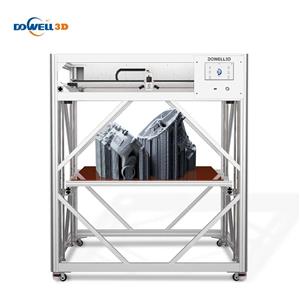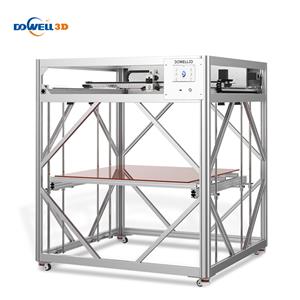Main Advantages of 3D Printing in the Aircraft Industry
The aircraft industry has embraced the transformative potential of 3D printing. Also known as additive manufacturing, this groundbreaking technology has opened new possibilities, revolutionizing the way aircraft components are designed, prototyped, and constructed. 3D printing has emerged as a game-changer in this industry that must constantly innovate, reduce costs, and improve performance. From lightweight designs and cost efficiencies to streamlined production processes and environmental sustainability, 3D printing offers a multitude of advantages that are reshaping the future of aircraft manufacturing.
In this article, we will explore the six main advantages of 3D printing in the aircraft industry, highlighting how this technology is propelling the industry towards unprecedented heights of efficiency, customization, and environmental responsibility.
1. Simplify the Parts
3D printing allows you to consolidate what would be multiple components into a single, more streamlined part. Fulfilling multiple functions with fewer parts means you reduce complexity, simplify the assembly process, and eliminate points of failure. That’s good for reliability, maintenance, and manufacturing alike.
2. Fast Production
Additive manufacturing offers faster production capabilities compared to traditional manufacturing methods. That translates into quick turnaround times, enabling manufacturers to respond swiftly to production demands, urgent repairs, or prototype iterations. This advantage is crucial for maintaining fleet availability, reducing downtime, and responding to urgent maintenance or replacement needs.
3. Weight Reduction
3D printing lets you create lightweight and optimized structures. It allows for the fabrication of intricate internal lattice structures, which can significantly reduce weight while maintaining structural integrity. Lighter aircraft are more fuel efficient, can carry more payload, and often see better overall performance. The whole machine benefits when you minimize the components’ mass. Since parts are usually lighter when printed than when conventionally constructed, additive manufacturing is a perfect technology for aviation.
4. Improved Aircraft Design
Additive manufacturing opens up new design possibilities. The freedom to create complex geometries, internal channels, and lightweight structures provides opportunities for innovative and optimized aircraft designs. This can result in better aerodynamics, strength-to-weight ratios, and functional integration. With 3D printing's design flexibility, engineers can push boundaries and explore novel solutions.
5. Improved Supply Chain
The introduction of 3D printing technology in the aircraft industry has brought about significant improvements in the supply chain. Traditionally, supply chains for aircraft parts involved complex logistics, long lead times, and large spare-part inventories. However, 3D printing can make the supply chain more streamlined and efficient. Since you can print parts on demand, there’s no need for massive standing inventories or the large facilities and inventory management systems needed to support them. Instead of waiting for parts to be sourced from external suppliers or manufacturing facilities, 3D printing lets you create the parts internally, in-house, or on-site. You gain more control over your supply chain when you’re not dependent on external suppliers. More to the point, that means faster aircraft repairs, less downtime, and increased operational efficiency.
6. Reduced Supply Chain Cost
3D printing technology has also reduced supply chain costs in the aircraft industry. The traditional supply chain for aircraft parts includes tooling, transportation, storage, and inventory management. 3D printers can reduce or even eliminate many of these expense factors. Since 3D printing allows for on-demand production, you no longer need to maintain a large spare parts inventory, saving you the money associated with inventory management, storage, and the risk of obsolete parts. Additionally, 3D printing reduces your reliance on external suppliers, thereby reducing transportation costs and lead times. Furthermore, the simplified part designs made possible by 3D printing often require fewer components and materials, reducing material costs and waste.





